Hulita Koloi's concrete-dipped garments
Date 1 February 2021 Words Francis McWhannell Photography Madeline Smith
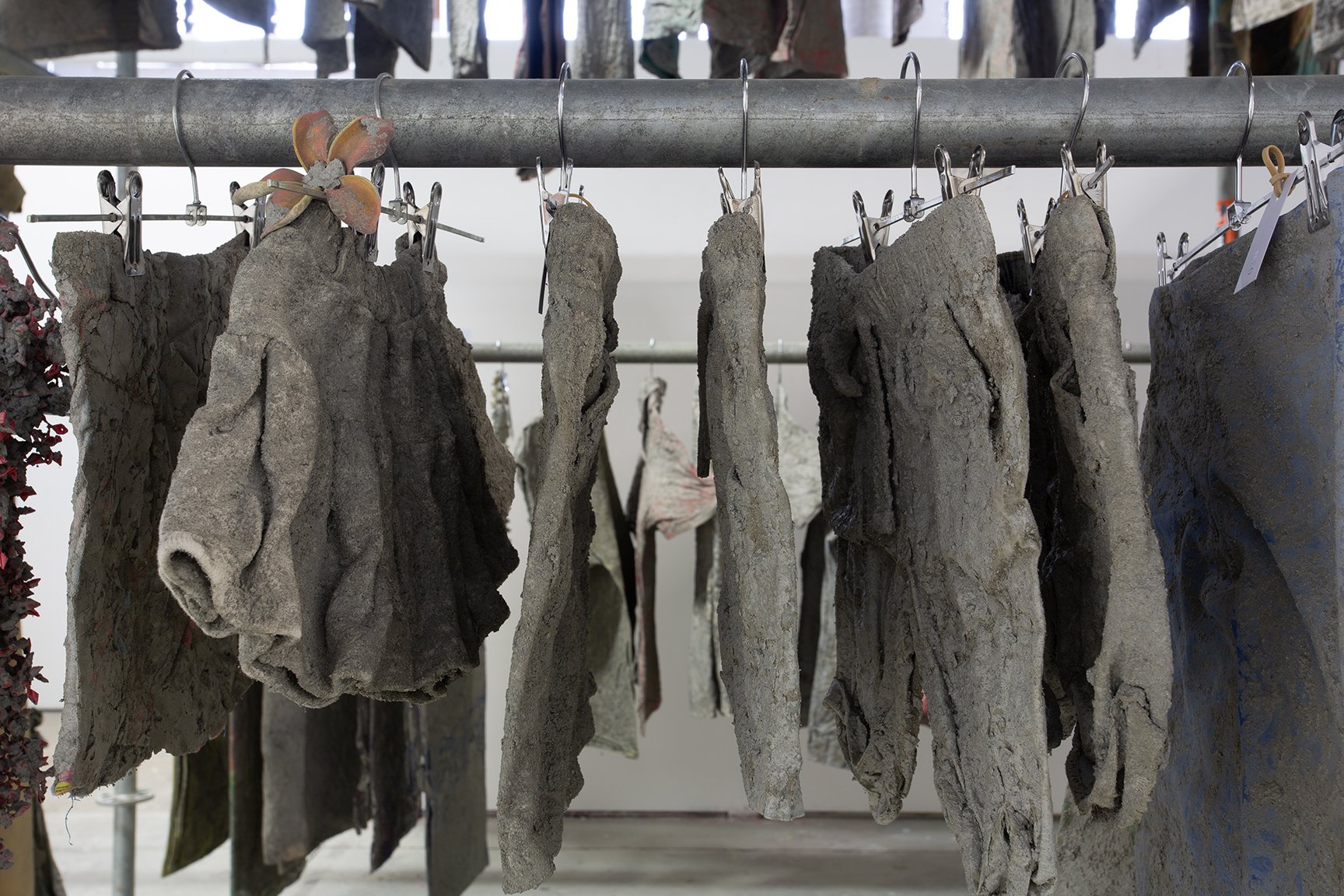
Hulita Koloi (b. 1996) is a student at Whitecliffe College of Arts and Design in Tāmaki Makaurau/Auckland, Aotearoa/New Zealand. She recently co-curated a young artist show, WYF: Where You From, at Te Uru Waitākere Contemporary Gallery. I first became aware of Koloi's work as an artist when I was a judge at 2020’s Eden Arts Art Schools Award. She earned a highly commended prize for her presentation, Malaloi.
The eponymous central work consists of a cube of scaffolding from which hang 139 concrete-dipped garments. The clothing comes from many places, not only from around Aotearoa/New Zealand, but also from Fiji and Tonga. Koloi, who was born in Tonga but has lived in Aotearoa/New Zealand since she was three, used social media to put a call out to members of the wider Moana Pacific community, requesting "pieces that inspired pride for their cultures." In bringing the items together and forging them into a monument, she celebrates the community, the collective effort of gathering, and the individuals who once wore the clothes. The work is experientially rich. It initially appears as a monolith, rigid and imposing. Yet it is also inviting—enter and you are enveloped, embraced.
Standing inside Malaloi, I thought of the sensation of being surrounded by racks in a crammed second-hand store and could almost smell that strangely universal scent of old clothing. A process of revelation took place as I began to pick up on patterns and logos discernible through the grey skin. The garments felt assaulted, not just dirty (off the sports field, say), but as though they been through a trial. I pictured clothes caked in sand on a beach—perhaps dropped off a nearby boat, perhaps having endured something worse, like a severe storm. I thought, too, of concreting as a job, something that is tough work, hard on the body, and not always well paid. Concrete is, of course, central in present-day construction, particularly in urban environments, which can threaten homogenisation as they absorb people of diverse cultures. Koloi notes, “By layering the clothing in concrete, I hoped to emphasise the ever-growing separation from our cultures and faith at the hands of capitalism.”
Even without such information, Malaloi is perfectly articulate. Mournful and proud and drab and exquisite all at once, it’s a work by an exceptionally promising artist.
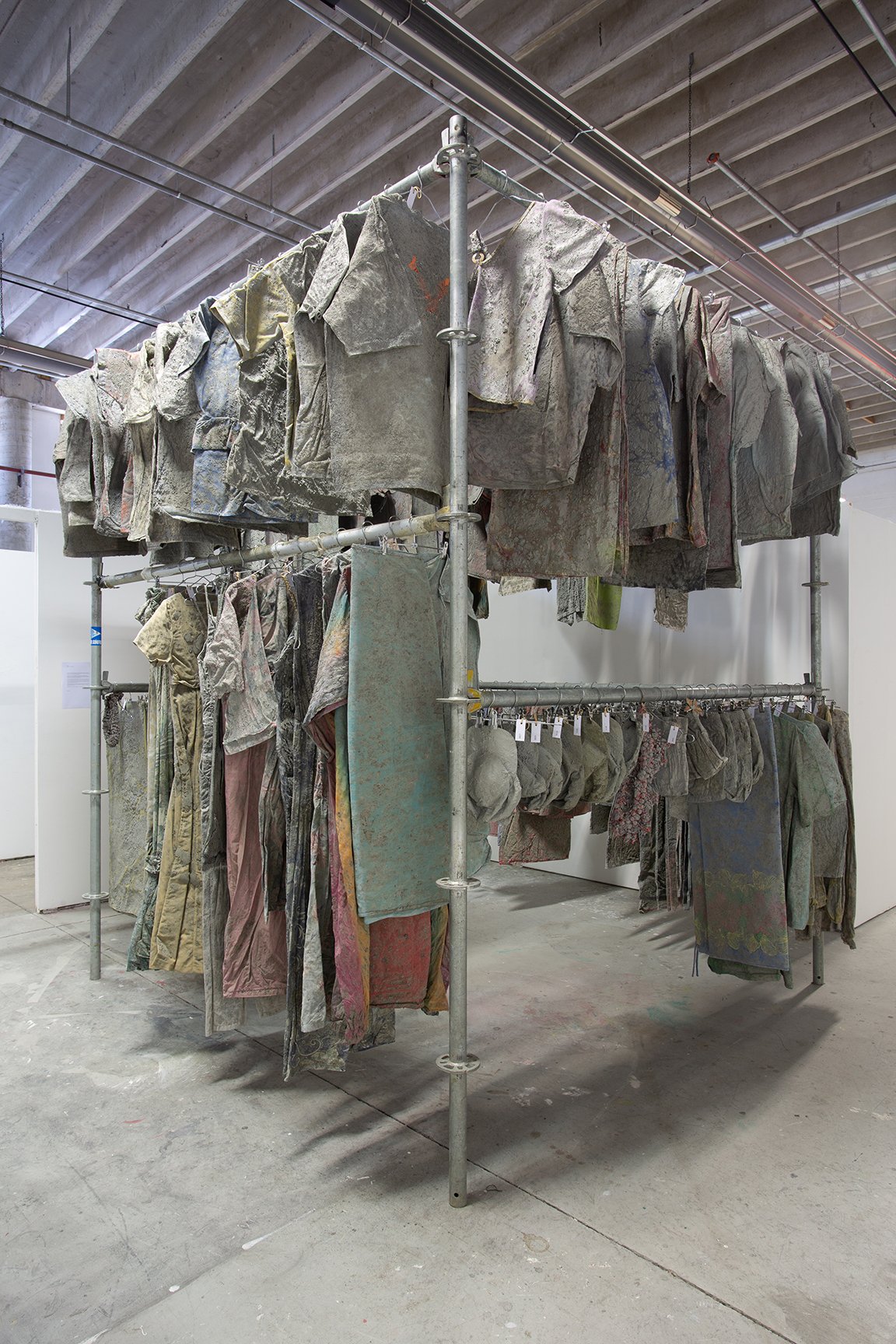
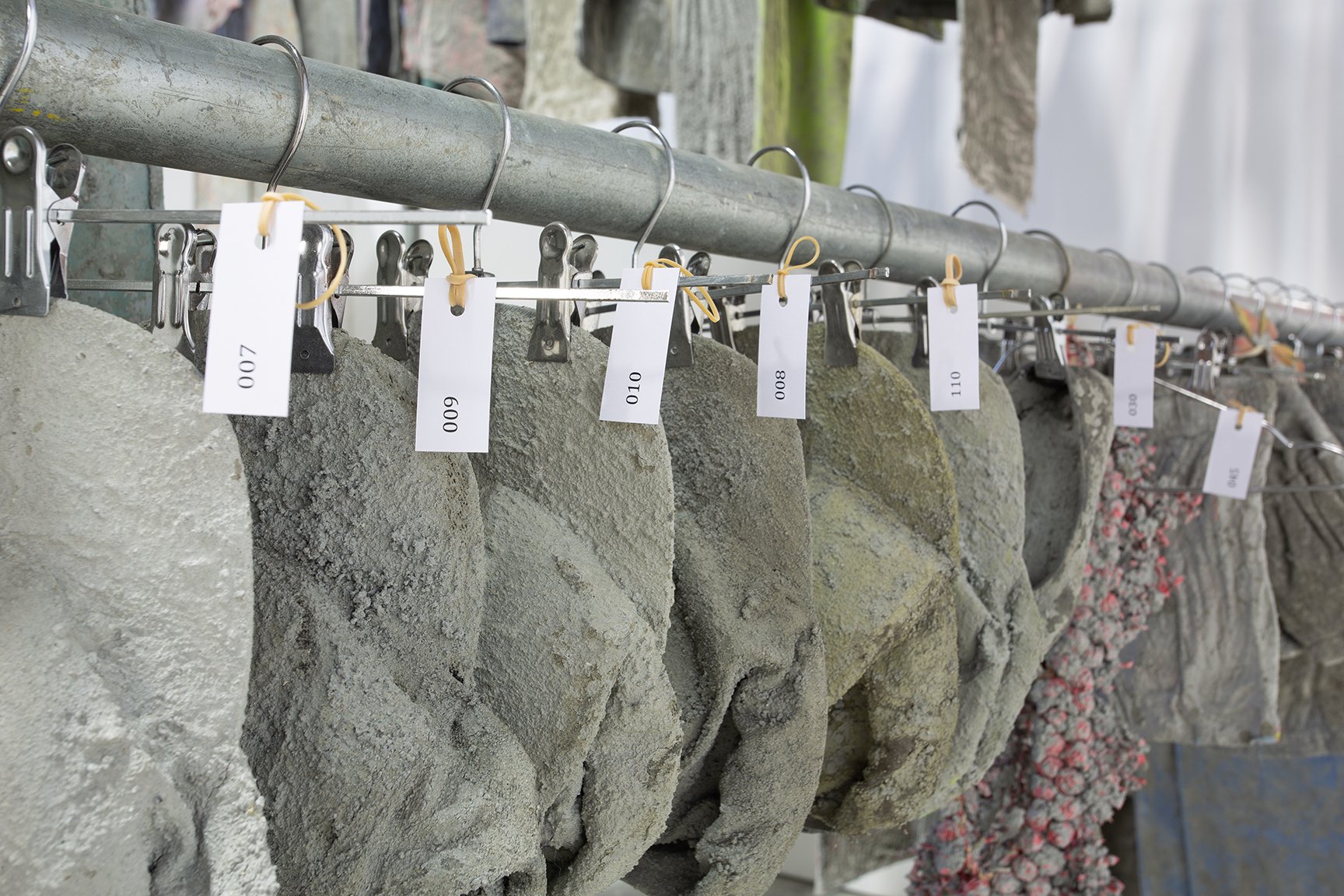

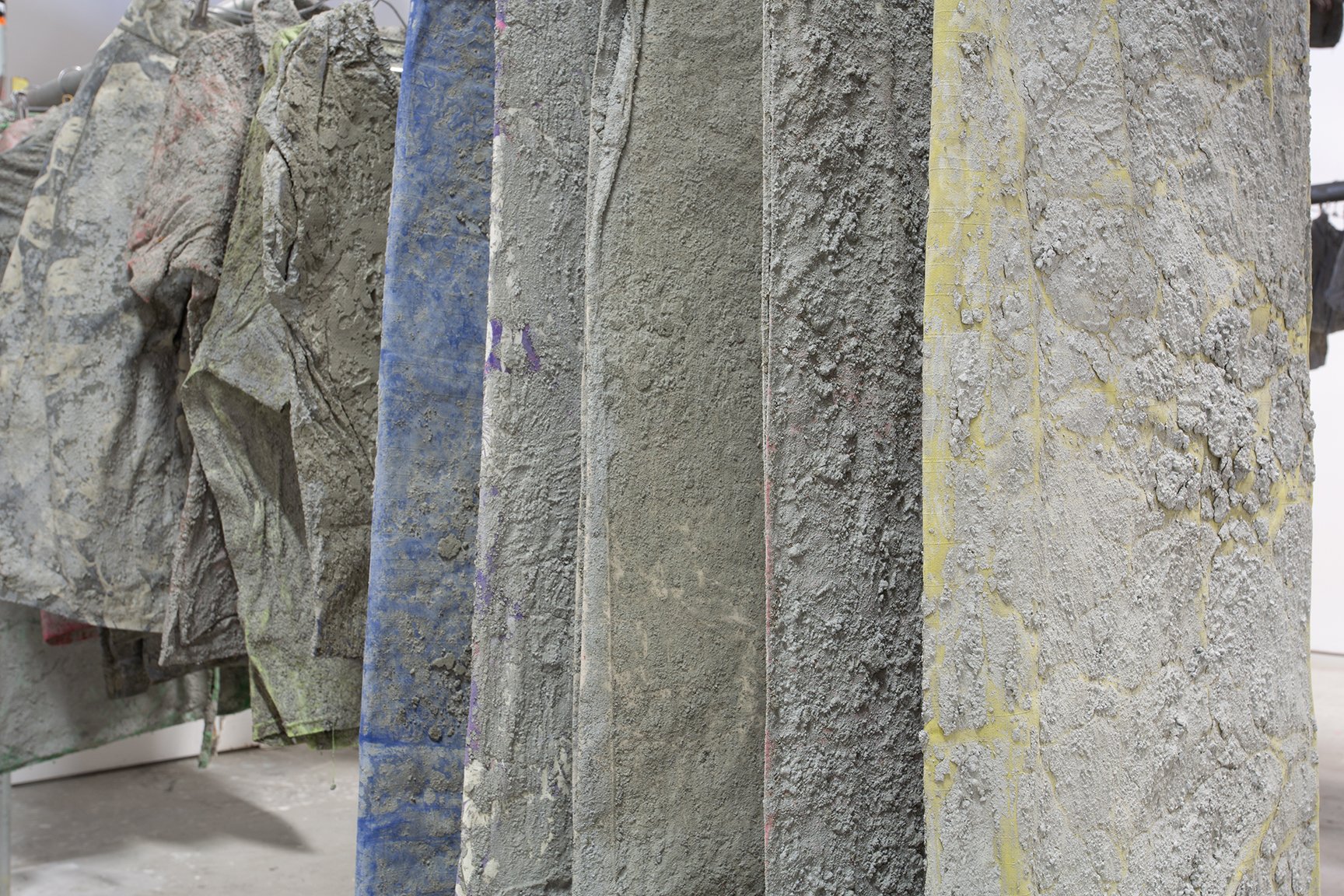

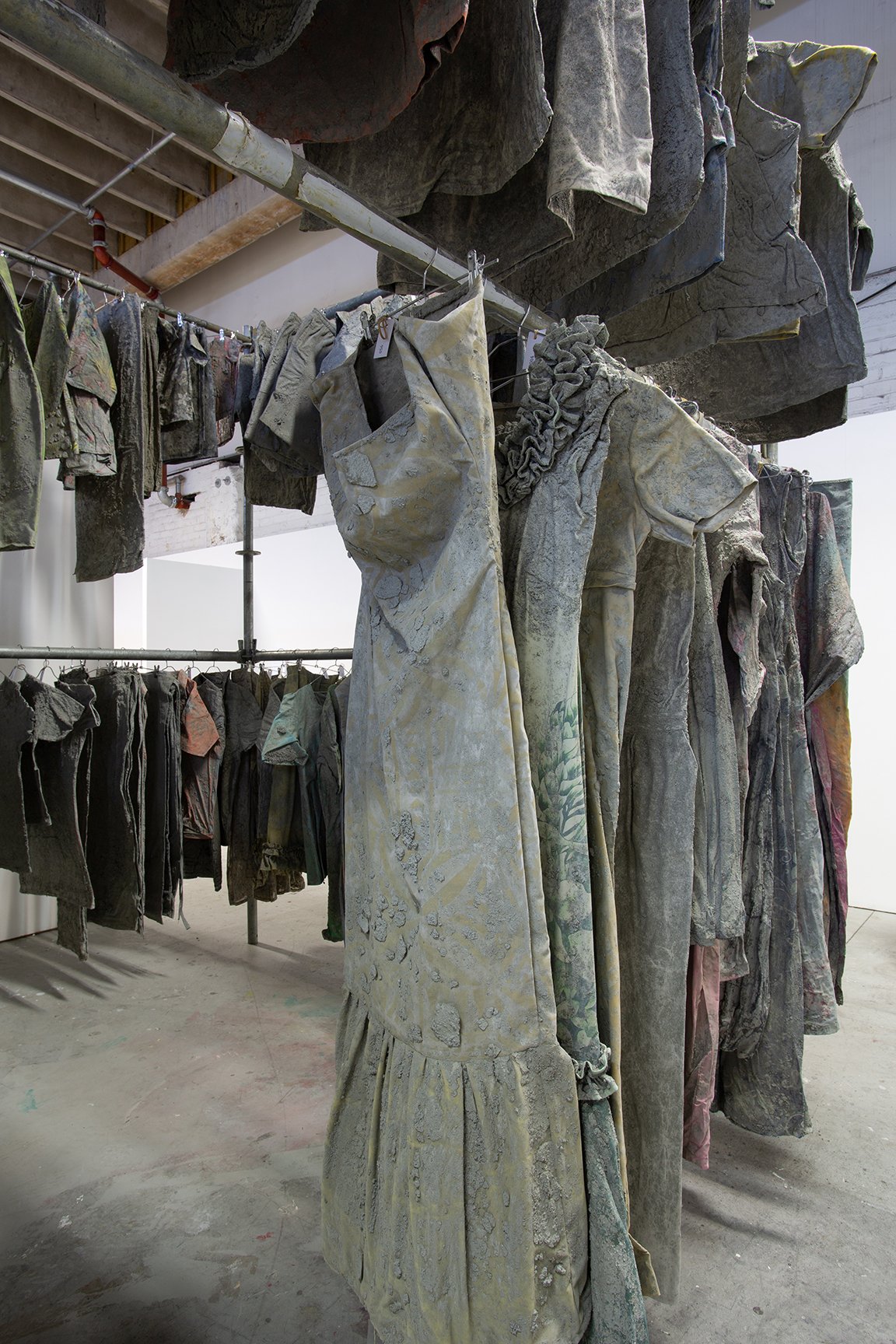
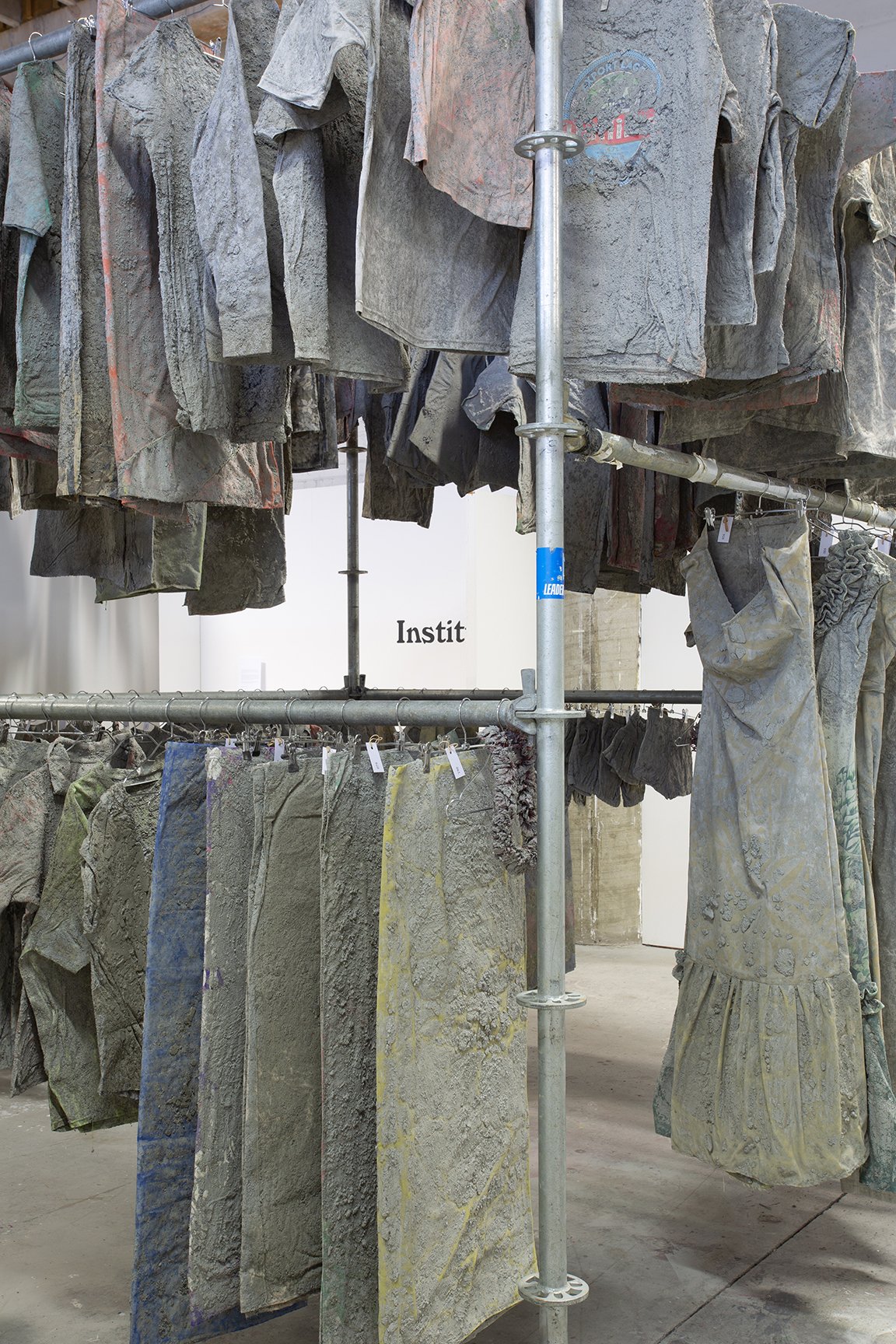
Text first published in our sibling magazine, Index, Issue Nº01 (September 2020) — BUY IT HERE NOW
MORE COLLECTED ESSAYSMORE AOTEAROA ARTISTS
Subscribe to The Art Paper in print here

